It’s an early summer morning and the shadows are still long across the lush green fields of rural Kentucky.
In that peace breathes a golf course that complements the gentle rolling hills. It’s vast, wide open and right in front of you—the whole layout is practically visible from the parking lot—with barely a tree to be found within the confines of play.

You have the first tee time of the day. Arriving early, you head to the driving range where an untouched pyramid of balls awaits. It’s completely quiet, except for some distant moos from cows, announcements by roosters and the recurring sound of club meeting ball. The field before you looks like it goes on forever as you aim at a red barn in the distance.
The barn is painted with the picture of a woolly mammoth and a green arrow pointing to the right, leading golfers to one of the most underrated courses in America.
Welcome to Park Mammoth Golf Club.
A beacon of public golf out in the country
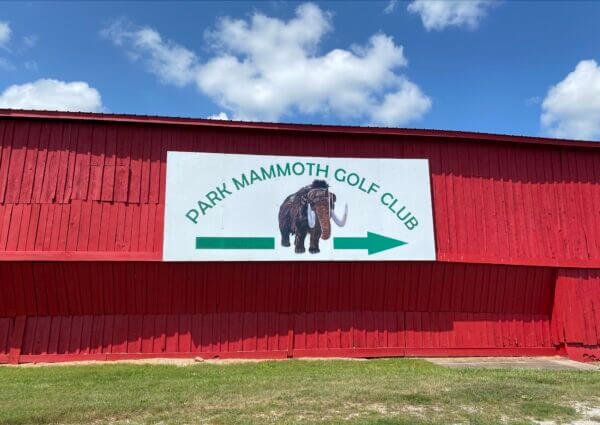
Before I get into my experience, I want to reiterate that I have no relationship with the golf course. I paid full freight to play and this is an unfiltered review of my honest impressions.
There is something about an entrance to a golf course that can make you fall in love.
When I drove into Park Mammoth for the first time, I immediately felt this unexplainable gravitational pull.
The opposite of daunting, Mammoth welcomes you with open arms—emphasis on “open.“
When you pull into the parking lot, which sits atop a hillside next to the clubhouse, you can see so many holes that they seem to blend together into one stew with massive swaths of fairway, fescue and striking green complexes.
You feel untethered and directionless, wondering which tee corresponds to which green.
My first words out of the car were, “What is this place?”
This place is Park Mammoth, a recently renovated (2023) course in Park City, Ky., about 25 minutes from Bowling Green, home of Western Kentucky University. Its closest major cities are Nashville and Louisville, both about 90 minutes away.
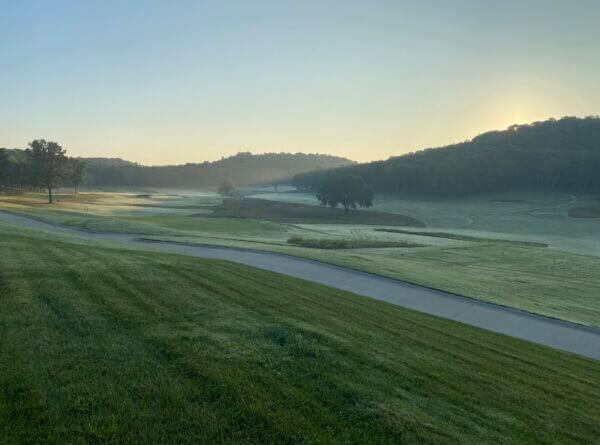
Built in 1964 and named Cave Valley Golf Club, the course was purchased at a bankruptcy auction in 2019 and renamed to reflect its proximity to Mammoth Cave National Park just down the road. Designer Brian Ross led a complete rebuild of the course, taking inspiration from the heralded Sweetens Cove nine-hole course about three hours south of Mammoth.
Imagine what this could mean for other courses around the country. The land where Mammoth sits is fairly benign and unremarkable, but Ross and his team turned water into wine with a creativity that quickly made it one of the top courses in all of Kentucky.
What is immediately intoxicating is how the course is visually stimulating at every turn—but without the insatiable need to intimidate and embarrass the golfer. On the contrary, this is not a particularly difficult golf course.
It’s just beyond 6,200 yards from the tips and you will have to work hard to miss fairways (challenge accepted). Unlike at Sweetens where every green is wanting to repel shots, Mammoth’s putting surfaces are more understanding around the perimeter. The greens themselves are wonderfully shaped and beautifully manicured but far from frighteningly fast. Given the par of 70 (only two par-5s) and the generosity of design, your final tally for the day is likely to be lower than you would expect.
Yet there is no sense of leaving unfulfilled or unchallenged. This is the type of course you play once and quickly remember each hole.
It would be a stretch to call it a budget course ($112 in the summer with much lower rates in shoulder seasons), but the price is more than fair for the experience you get.
In terms of intriguing design, playability, affordability, easy access to tee times and caring customer service, I believe this is a true beacon of what public golf should be like in America.
And, it begs the question of whether hundreds of other public courses can also reinvent themselves.
A round to remember
Getting out of my car, a gentleman in a cart quickly pulled up beside me and asked if I want to be driven up to the clubhouse. It was unnecessary given that the pro shop is maybe 60 yards, albeit uphill, from the parking lot. Regardless, that gesture set the tone for the kind of service I received.
Everyone I met here seemed like they wanted to be here.
I checked in at the clubhouse, which is small but inviting. It sits right at the intersection of Nos. 1 and 10, with multiple coolers of drinks available outside of a window that connects to the bar inside. That makes it easy to grab drinks at the turn.
I was invited to take a cart to the driving range, which is back down the entry road. The range features a huge chipping green and plenty of balls set up for you. Right next door is the recently built Little Mammoth par-3 course, which seemed to have all the charm of the big course.
After warming up, I headed back to the practice putting green above the parking lot and adjacent to the first tee.
I’m an absolute sucker for a first tee that sits on a hill next to the clubhouse. This one is not the first hole at Riviera, but it does a damn good impression.
You pull your cart up to the starter stand and the tee box is a step or two from the cart path. You are greeted with this handsome downhill tee shot to a huge fairway, setting up a short iron to an elevated green where you can see the flag but little of the putting surface.
By the time you reach the first green and turn around, the expansive view with the clubhouse and large American flag in the background is arguably better than the perspective you had just a few moments prior.
There are no signature holes at Mammoth. No crescendo. No isolated “wow” moments you spend all round waiting to reach.
What you get is a steady steam of intriguing golf, each hole offering a distinct personality.
While the fairways match the “mammoth” name, the Bermuda rough is short, clumpy and thicc. It’s a bit of a gamble—you might get a great lie in the rough that is basically fairway or you might get a muddled nest of grass. And if you find the fescue, which would require a bad shot on nearly every hole, it’s an automatic lost ball in the summer. In the spring, you will have better luck.
Here are my favorite nine holes at Mammoth.
No. 2 (Par-4, 318 yards)
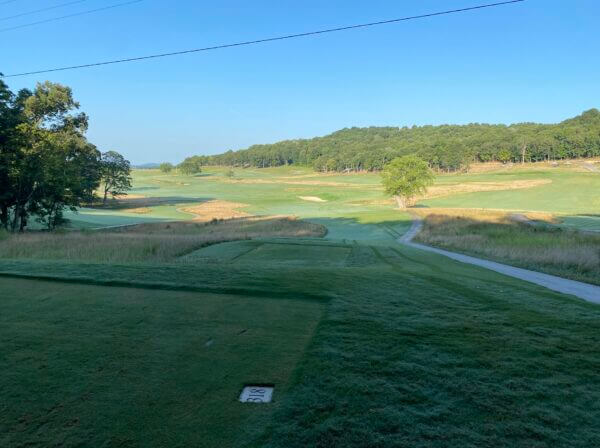
You are encouraged to hit a long iron or fairway wood off this tee because there is no use in pushing the ball down as far as you can on this short par-4. The defining feature is a gargantuan bunker left of the green that is not to be messed with. Right below that bunker is the fourth green, creating an intersection. The stretch of Nos. 2-4 has some crossfire because it’s easy to find yourself playing from the wrong hole, but that isn’t an issue the rest of the day.
No. 3 (Par-5, 564 yards)
One of my few critiques of the course is that there are only two par-5s and neither of them is reachable for 90 percent of the golfers playing. Having said that, this tee shot is so cool—two bunkers and some fescue sitting in a sea of fairway—leading to a blind second shot. Even two good pokes will leave you with a full wedge into a green cut in two vertically by a huge slope.
No. 7 (Par-3, 164 yards)
The only true water hazard on the entire course is here but it would take a very poor shot to find it. Instead, you are focused on a green tucked up against a slope that leads down to a road, signifying that left is dead. That forces your attention out to the right where there is ample room to miss—but a two-tiered green can make the pitch shot difficult from over there.
No. 8 (Par-4, 348 yards)
A long iron or fairway wood off the tee will suffice as you lay up into a large expanse of fairway. The real fun is all about the second shot to this tiny green that is arguably the most heavily guarded on the course. There is a big false front, and missing short is not ideal. On the right side of the wraparound green, a huge backstop offers help to get the ball close—or serves as an obstacle if you’re on the wrong side of it.
No. 9 (Par-4, 308 yards)
One of my favorite holes of 2025. No. 9 looks like nothing off the tee. With the markers up slightly from the posted yardage, a good drive can easily reach a green that has a decent amount of bail-out room to the right. The problem here is that short right is typically not the place to be. You are left with an awkward pitch over a bunker to a wild green that has a mountain of a horizontal slope directly in the middle of it. There is also a steep false front. It’s possible to spin a wedge off the top section of the green, down through the bottom section and then off the front of the green. Laying back off the tee, you get a full wedge shot but have to control your distance. The margin between a quick birdie and a quick bogey is razor thin.
No. 15 (Par-4, 389 yards)
I’m in love with this hole. The tee shot is, once again, fairly wide open. Your only mission is to avoid the left side since there is a tree that can potentially be bothersome for the second shot. The approach is to an elevated and severely pitched green with backstops for the lower hole locations. It’s a shot you can get close—but short or long of the green can be a big problem.
No. 16 (Par-3, 240 yards)
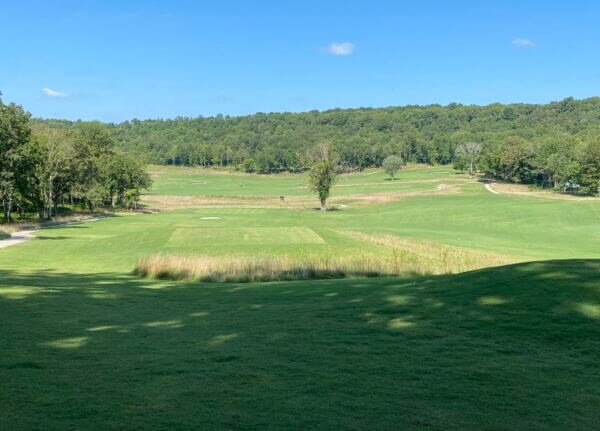
I’m not big on long par-3s but this one does it for me. It’s a downhill tee shot to a green with plenty of room to run the ball up (harder to do in the summer when everything is a little softer). It’s a big green and there is a lot of room to operate with but you still have to hit the shots.
No. 17 (Par-5, 520 yards)
This is the most difficult tee shot on the course. It’s slightly narrower than all the others and there is fescue on both sides so bad misses are punished. The second shot is blind and turning to the left. Unless you have a great look to force a fairway wood up near the green, it’s a good idea to lay back and have a full wedge shot in for your third.
No. 18 (Par-4, 316 yards)
An outstanding payoff for reaching the 18th tee is looking back at the clubhouse. The tee shot gives the impression like the ball stays in the air forever but the green is not reachable unless you have 300-plus yards in the bag. If the hole is up front, the more prudent play is to lay back with an iron to set up a full shot into the green. If the hole is in the back, hitting driver and then a 50-yard wedge shot over a steep bunker is much easier if you have the room.
A word on some of my least favorite holes
There are no truly bad holes at Mammoth. The worst thing I can say is that Nos. 10-14 are slightly boring in comparison to the rest of the layout.
There is a very short par-3, No. 11, that has too large a green for such a short hole. No. 14 is a bit of a throwaway hole and easily the worst on the course.
Having said that, there is nothing here that is convoluted or too much. I wrote last year about Chambers Bay, a fantastic course but a little excessive in some spots. I don’t have that same complaint about Mammoth.
Conditioning and setup
I would give the conditioning a B+ and the overall setup an A.
The fairways were good overall—but a couple of them had some scarring. This didn’t come into play for me but I noticed it on the 17th fairway. Some of the fringes had a few weeds but they were not overly noticeable.
The rough was great. It’s a wide-open golf course and the rough should be some penalty. It was totally playable but tricky to judge.
The greens are in terrific shape at a reasonable speed. If anything, they were a touch slow. There are slopes to consider but it never feels goofy.
The only tee box I had an issue with was the first hole. As mentioned, it’s up against the cart path and the turf is firm and sandy. Other than that, I had no issue with the tee boxes.
Setup on the whole was very fair. There are spots on holes where you really don’t want to miss but you always have a bail-out. The hole locations are fun and reasonable.
Tee time availability, price, customer service and other notes
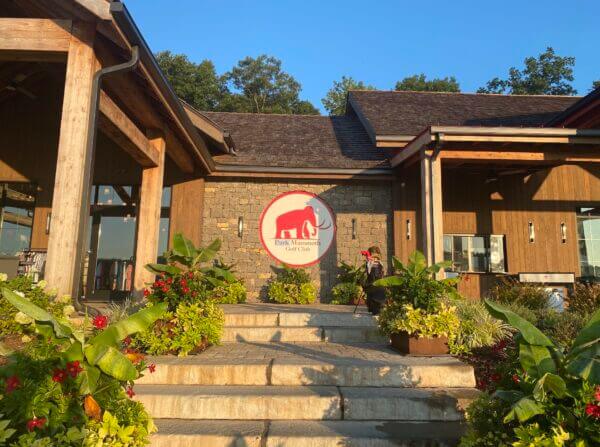
While the tee sheet was full on the Saturday I went, there were still tee times available a few days prior to playing. If you would like to play, you simply go online and book.
There is an all-day play rate of $134 if you want more than the $112 18-hole rate. It costs $25 to play Little Mammoth if you want to tack on that experience.
In the spring, you can walk Mammoth for about $60. It’s not the easiest walk so don’t do it unless you are in shape and the weather is cool.
This is a good value in my book. It’s a fun course and a great experience. I’ve paid a lot more for less, that’s for sure.
Compare all of this with a place like Sweetens Cove. Getting a tee time is impossible and the whole experience is tailored to buddies trips and larger groups. Getting there is just as hard as getting to Mammoth.
I also wanted to mention the awesome customer service. Even when you bring the cart back to the clubhouse, they ask if you want a ride back down to the parking lot. They also encourage you to hit balls before and/or after your round. You can stay as long as you like.
The pro shop attendant, starter and everyone you meet are super nice and inviting.
If you are interested in parlaying a trip to Mammoth with other courses, I suggest fellow Kentucky tracks Dale Hollow and Mineral Mound. I really enjoyed both of them, although Park Mammoth is my favorite of the three. I’ll even come play with you (no, seriously, I will).
Overall grade
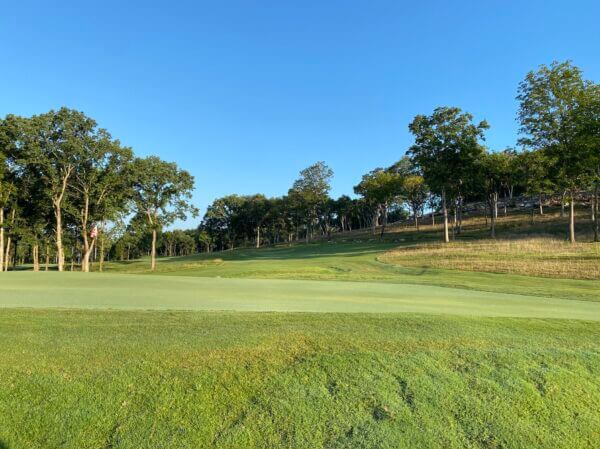
If you can’t already tell, I’m smitten with this place.
My overall grade is an A. It’s such a tremendously fun golf experience (and golf is supposed to be fun, right?) with interesting decisions and cool shots to hit. You’ll make some birdies but Mammoth can bite back if you go somewhere you clearly shouldn’t.
I know the location is a little “in the middle of nowhere” for many of you reading this, but if you are visiting Nashville or Louisville, ditch those public golf scenes and go for a drive (I can’t speak for Louisville, but the public golf in Nashville is decidedly mediocre).
There is also plenty to do in the area. I’ve visited Mammoth Caves National Park, which is remarkable. If you’re a bourbon drinker, you can spend hours driving around going to tastings. (Drink responsibly!)
A sweet little golf weekend with a side of adventure is waiting for you. It won’t even be all that expensive.
No, I am not on the Kentucky tourism board.
I am simply a man who wants you to visit Park Mammoth.
The post MGS Experiences: Park Mammoth appeared first on MyGolfSpy.


